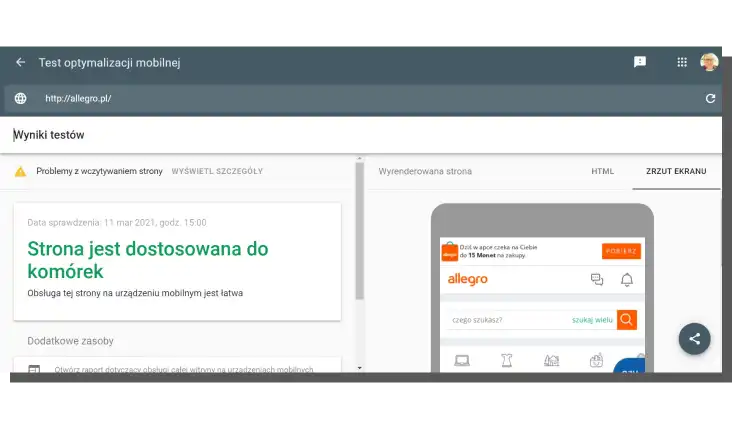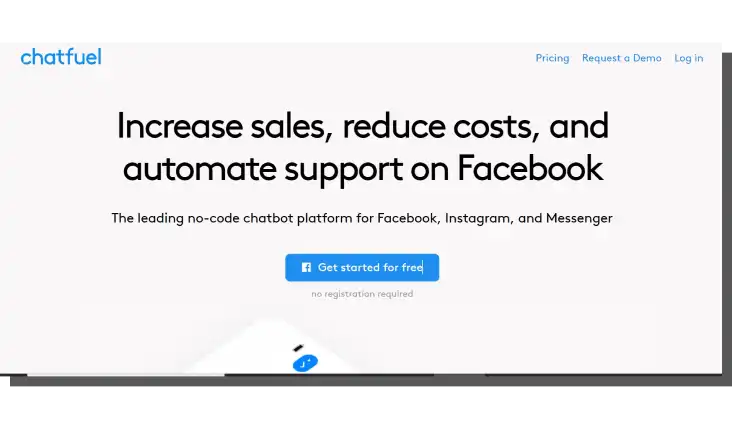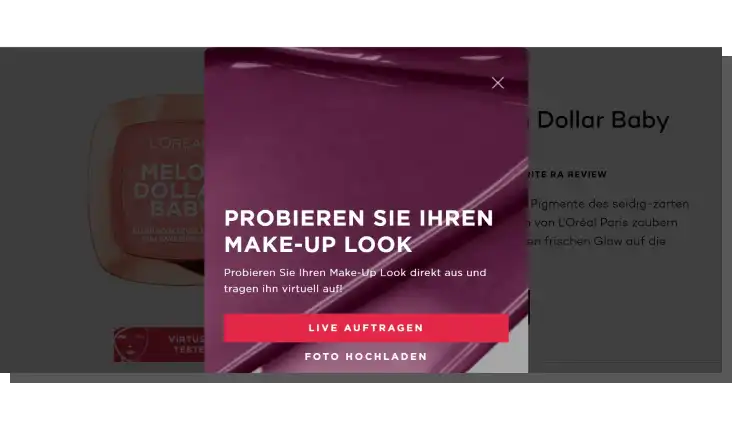If we were to paraphrase a one-liner from Pulp Fiction, we would have to put it this way: E-Commerce is changing, and it's changing in a big way.
Every year E-Commerce offers and standardizes functionalities, solutions, and approaches. It faces increasingly higher pressure imposed by customers.
As designers and customers, we see this more often. And that's a very good thing because customer-focused E-Commerce is the E-Commerce users want to use.
Alright, we are in 2023. What new trends started to reign in E-Commerce? How did online store customers' expectations change? What solutions, functionalities, and values do users expect from the E-Commerce industry?
Let's look at them.
Summation of E-Commerce experience or The Story's Law of E-Commerce
A good old Jakob's Law of Internet UX states that users spend more time on competing websites. And they always expect a website, an online store, to offer all the functionalities, facilities, and E-Commerce solutions they know from other stores.
We took the liberty of updating this law. To adapt it to E-Commerce.
So, our proprietary "Law of Summation in E-Commerce" states that:
When you run a store in 2023, it needs to be the same as others but a little better. Or even much better. Most of all, regarding the summation of experiences, solutions, functionalities, standards, and expectations.
It sounds pretty nice, don't you think? But it's not about how it sounds. Our law has a deeper justification. But we'll write about it at the end of this article.
Now, let's take a look at the most important trends in E-Commerce in Poland and around the world. We'll take a minute to look at tendencies, standards, and expectations that the E-Commerce industry needs to face soon.
It's a time for E-Commerce that is simultaneously very favorable (the Covid-19 pandemic) but also poses big challenges. The exponentially increasing competition poses a challenge to all players in the market.

By the way, you can find an interesting discussion of the situation in E-Commerce and the most important trends on a global scale in the article on Forbes, "3 E-Commerce Trends To Watch In 2021."
Omnichannel User Experience
Omnichannel, which offers the ability to contact and shop in various channels (online and offline), isn't anything new. It's true. However, the strength of customers' expectations regarding this ability is definitely something new.
Webrooming, Showrooming — users fell in love with the option to jump between channels, shopping according to the current need in one channel or a different one. In 2023 it is a standard.
All the more so since the pandemic accustomed them to naturally move between channels along with changing covid restrictions.
So how to design a positive and desirable E-Commerce UX regarding this matter?
Above all, you should:
- Take care of the mobile channel with technology and solutions such as RWD, PWA, and Native App
- Offer different options for purchasing, collection, and delivery (e.g., buy online and collect offline, buy offline and deliver to the home address)
- Personalize the offer in each channel
- Treat channels as complementary and not competitive or separate
- Use technologies that support personalization and flexibility and allow you to create new points of interaction supporting User Journey, Customer Journey, and Customer Experience in E-Commerce (e.g., SAP Commerce Cloud).
Personalization in E-Commerce
The abovementioned personalization needs to be discussed in much more detail because it's becoming a new, very strong, influential standard that has a chance to dominate E-Commerce for many years.

What is the personalization of interaction with the customer in E-Commerce? It's meeting expectations and preferences through the use of data regarding previous behavior and preferences.
Personalization in the context of the UX means repeatability of experiences and the ability to ensure compliance with expectations.
The role of personalization can be put like this: to each according to their needs, to each according to their capabilities. The uniqueness of experience in a practical sense means the following:
- Filtering of the offer
- Maintaining relationships and contact through omnichannel notifications (e.g., e-mail, mobile notifications, notifications in social media)
- Dynamic tailoring of the home page, category pages, product pages, content, prices, offers, promotions, and recommendations with a change in, for example, the location of the customer (use of geolocation functions)
- Adapting the offer to seasonal, random, and market changes (e.g., changes in local and regional offers)
- Establishing relationships with chatbots, customer service offices, hotlines, support teams, etc.
M-Commerce Friendly — E-Commerce Trends
We write regularly about the growing significance of M-Commerce in our E-Commerce section. As we don't want to repeat ourselves, we will just remind you that mobile applications are no longer a curiosity but a standard channel.
The mobile channel dynamically evolves, is forward-looking, and is equally expected as the ability to shop with desktop devices.

Ensuring a positive user experience in the mobile channel is today equally important as on its desktop version.
The number of studies, recommendations, design patterns, and UX must-haves is growing exponentially.
How to live up to customers' expectations who want to shop in online stores with mobile devices?

Definitely, you should:
- Test the store with Mobile Optimization Test offered by Google
- Use Google AMP technology that supports the speed of website loading and improves impressions of mobile customers
- Utilize strategies for mobile app design
- Pay attention to design recommendations in Task-Oriented design
- Account for the micro-moments phenomenon
- Adapt the mobile interface to the needs of M-Commerce customers
- Ensure speed, ease, flexibility, seamlessness, and availability of mobile payments
- Use push notifications
- Ensure User Flow that supports the increase of the sales volume
- Provide the ability to buy online and offline thanks to the PWA technology.
By the way, if you haven't clicked on the previous link to learn about PWA, do it now. It's really worth it ;) We wrote a separate article about Progressive Web App.
Visual E-Commerce
When it comes to E-Commerce and M-Commerce, users buy with their eyes. Engaging only one of the senses and relying on visual information and impressions is sometimes stressful for customers.
The inability to test the product, try it on, smell it, touch it, and use it means a considerable information deficit which should be compensated to users in the best way possible.
That's why it's essential to offer a user experience that utilizes the potential of this sense and minimizes its limitations.
Visual E-Commerce primarily consists of paying attention to the following:
- Combination of high-quality photos with the speed of their loading (e.g., through a WebP format)
- Presentation of the product in the form of 2D images as well as 3D objects (360° visualization) and through Virtual Reality technology (VR) and Augmented Reality (AR)
- Product search with a keyword and an image (Visual Search)
- Digital footprints (e.g., photos of the products, popular videos in which products are reviewed and rated regarding the first impression, first use, etc.).
Let's note that digital footprints raise credibility and trust and also provide social proof.
Chatbots support relationship building, bonding, loyalty, and satisfaction
Not everybody likes them, but everybody talks to them. Chatbots have gained popularity and are usually one of the main interaction points in most online stores. Before customers talk to another human being, they usually interact (we purposely don't use the word dialogue) with them.

How do Chatbots support user experience in E-Commerce? Namely, they:
- Fulfill the role of a salesperson — a person that finds, indicates, recommends, informs, and compares. In short, it shortens and simplifies the purchasing process, supports the decision-making and selection processes
- Automate sales and turn them into self-service
- Support the personalization of the offer (also in the emotional sense, through the use of personal information, e.g., name)
- Increasingly better simulate the human-to-human interaction and react much faster to the expressed, during dialog, customers' needs (e.g., finding a product or comparing features).
New E-Commerce purchasing expectations in 2023
The authors of numerous reports, to which you will find links at the end of this article in the Sources section, are unanimous regarding the following matter. The Covid-19 pandemic has prompted many people to try online shopping and use it consistently.

The previously strong need for direct contact with the product in a stationary store has weakened. Older people have started to discover E-Commerce.
For the Baby Boomer generation, this is a significant change. New shopping habits change the balance of power across the industry. It also rearranged the structure of values previously preferred by online store customers.
NN Group researchers very thoroughly presented the panorama of new expectations in an article, "The New Ecommerce User Experience: Changes in Users' Expectations." And the list presented by them is abstract, universal, and value-oriented.
It overlaps with the abovementioned functionalities, solutions, and technologies. It's also a great supplement to our article in which we discussed the motivations of online buyers. We recommend reading "Why do we buy online?"
So, what do E-Commerce and M-Commerce customers expect in 2023? Primarily:
- Experience
- Options
- Accuracy
- Speed
- Convenience
- Assurance.
When discussing expectations regarding Experiences, authors from NN Group have the user experience and customer experience in mind, not the experience understood as the presence in the market.

The online store needs to be a tool for purchasing and a place where users experience something unique, intriguing, and inspirational.
In other words, fulfilling the need for entertainment and emotional experiences needs to be an added value.
Options are nothing more than offering a wide range of assortment, different delivery methods, availability, payments, customer support, and personalization of the offer. Providing a wide selection of solutions is saying no to compromise and discomfort.
The best way to attract customers is to offer them precise and detailed messages and information, such as the stock level, dates of deliveries, order fulfillment time, opinions of customers, price differences after discounts expressed in percentages, etc.
Everything that can be expressed with numbers should be expressed with numbers. That's what users expect from the store.
The transparency of the offer is crucial. Customers don't want to buy "tokens of products" but products.
This means that the purchase should be predictable in many dimensions.
Another expectation is the immediacy of the purchase, its fulfillment, and delivery. It means fast:
- Interactions
- Navigation
- Delivery and returns
- Complaints
- Service
- Decisions
- Payments.
And in addition, fast:
- Selection
- Search
- Ordering.
E-Commerce, when it comes to speed, takes no prisoners. Unfortunately, online stores that won't meet these expectations cannot compete effectively.
For the E-Commerce/M-Commerce customer, convenience is also a priceless value. And that means using all technological, functional, logistical, transportation, and commercial, but also User Experience capabilities in order to provide the desired and expected experience.
The cherry on top is the need to assure customers that their expectations are met.
Today, it's not enough to be friendly and convenient; the user's sense of security also needs to be maintained.
The security of data and transactions, the need for privacy, and anonymity need to be considered at every stage of the user journey.
And here, we're returning to our "Law of Summation in E-Commerce." It's not a matter of simply imitating and using everything you can.
Throwing ideas at a wall and seeing what sticks won’t cut it. The online store is not a stew — throwing random elements into it will not bring the expected result.
Summation of solutions means creating meaningful arrangements of functions and solutions. It's about the synergistic effect, which appears when functionalities and solutions complement and support each other and synchronize.
The most important E-Commerce trends in 2023. Summary
- Every year E-Commerce offers and standardizes new functionalities, solutions, and approaches.
- E-Commerce and M-Commerce are strongly determined by customers' expectations.
- When you run a store in 2023, it needs to be the same as others but a little better. Or even much better.
- The Covid-19 pandemic has created an almost ideal economic situation for E-Commerce.
- Omnichannel is a standard today that naturally stimulates customers to change channels. This change was influenced by changing covid restrictions.
- Personalization in E-Commerce allows you to meet expectations and preferences through the use of data regarding previous behavior and preferences.
- Personalization in the context of the UX means repeatability of experiences and the ability to ensure solutions and abilities that comply with expectations.
- M-Commerce has become a standard channel.
- The inability to test the product, try it on, smell it, touch it, and use it means a considerable information deficit which should be compensated to users by offering a user experience that utilizes the potential of the sense of sight and minimizes its limitations.
- Chatbots support user experience in E-Commerce by, for example, fulfilling the role of a salesperson.
- Regarding values, the most important expectation is to offer Experience, Options, Accuracy, Speed, Convenience, and Assurance.






